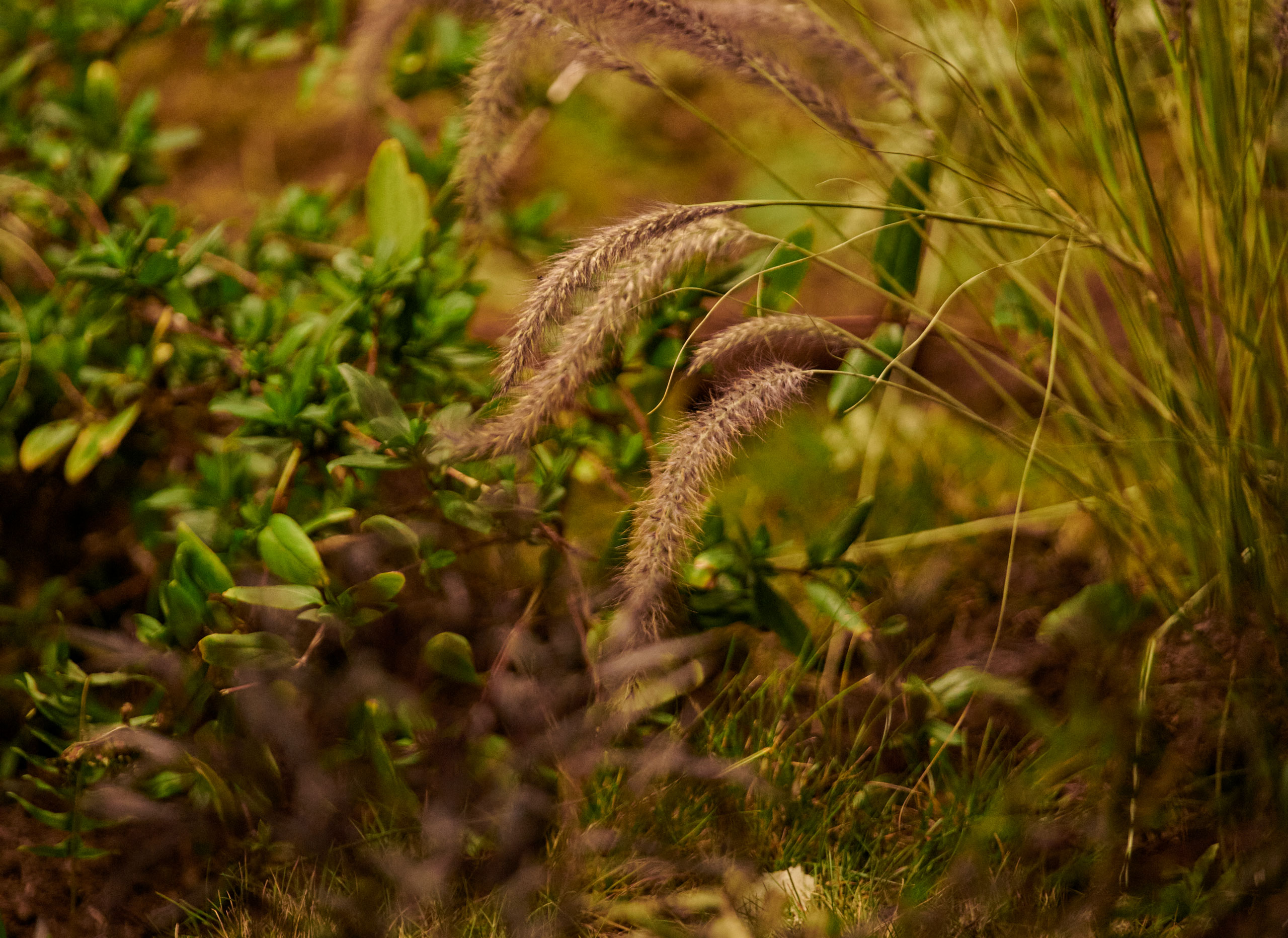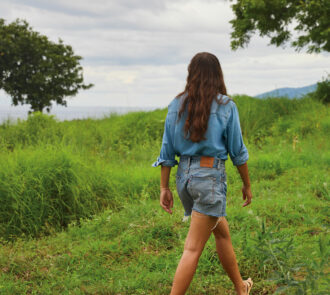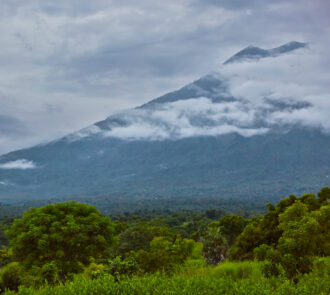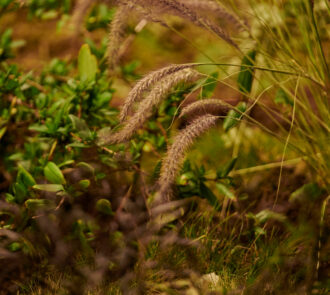Biodiversity
UN SDGs:
15
UNGC:
Principle 8
On the path to safeguard and restore nature
The United Nations has declared this decade — from 2021 to 2030 — the UN Decade on Ecosystem Restoration, as a call to protect and revive ecosystems all around the world. The threats to biodiversity are many, including climate change, land degradation, forest clear-cutting, habitat loss, poor water quality and pollution, habitat destruction, over-exploitation and others. Only with healthy ecosystems can we stop the collapse of biodiversity, enhance people’s livelihoods, and counteract climate change.
We are working to support healthy ecosystems through responsible sourcing of raw materials, responsible production and chemical management practices, effective waste management, and other actions. To guide our progress, in 2021 we created a new biodiversity goal, our first ever, as part of our global sustainability strategy. We are developing a detailed roadmap and key performance indicators to measure our progress.
Biodiversity Goals
Goal:
Continue to assess and identify material impacts and dependencies on nature across the value chain, in order to implement a comprehensive biodiversity action strategy
Goal:
Continue to assess and identify material impacts and dependencies on nature across the value chain, in order to implement a comprehensive biodiversity action strategy
Our Biodiversity Roadmap
In 2021, we developed a preliminary biodiversity roadmap, which we plan to finalize in 2022 after completing our full value chain biodiversity footprint. In alignment with the forthcoming guidance from Science Based Targets for Nature (SBTN), our biodiversity work will focus on:
- Avoiding new negative impacts in areas of high conservation value.
- Reducing unavoidable existing impacts through alignment with science and credible certifications.
- Restoring and regenerating ecosystems where impacts on nature cannot be avoided or reduced.
- Unlocking transformative opportunities for systemic change through supply chain and sectoral collaboration.
Our biodiversity roadmap began with benchmarking research on apparel industry biodiversity impacts, quantification methodologies, and best-in-class impact mitigation frameworks — including GLOBIO, IPBES and WWF. In 2021, we contributed to the Textile Exchange beta Biodiversity Benchmark to build out the textile industry’s baseline biodiversity performance. This benchmarking focused on different levels of biodiversity — genetic, species and ecosystem diversity, from seed to landfill degradation. Through this process, we identified the most significant biodiversity impacts in the manufacturing of our products to be:
- Cotton cultivation
- Manmade cellulosic fibers
- Fabric dyeing and treatment
- Textile waste
- Microplastics
Read about our use of plant-based dyes and safer chemicals, as well as our work toward zero waste in Consumption.
Mapping Biodiversity Impacts
Our intention is to set a biodiversity goal that will be based on a robust roadmap and include key performance indicators that are quantifiable and time-bound to result in nature-positive results. Among our actions will be a comprehensive overview of our direct and indirect impacts. Baselining our biodiversity footprint builds on the life cycle analysis of our static and dynamic Scope 1, 2 and 3 impacts, layering in the “extent x condition x significance” framework to assess the magnitude of pressures on ecosystems and species. We have engaged The Biodiversity Consultancy, specialists in biodiversity assessment and accounting, to conduct this baseline biodiversity footprint and steer our development of goals. Among other analyses, the impact assessment will measure mean species abundance to measure biodiversity conditions as well as species threat abatement and recovery to measure species extinction risk to develop a global biodiversity score for the full value chain. This effort and subsequent goal setting will be aligned with the forthcoming SBTN guidance.
Reducing Land Use Impacts
Our biggest opportunities to mitigate and reverse biodiversity loss — and to restore healthy ecosystems — occur at the farm level where the raw materials used in our products are grown. Cotton cultivation is one of the largest contributors to biodiversity loss associated with the apparel industry. In 2021, the vast majority of the fiber content in our products was cotton, so our primary focus is sourcing more sustainable cotton. This includes recycled, organic, and transitional organic cotton, as well as cotton grown with more sustainable farming practices such as Better Cotton and cotton grown under the U.S. Cotton Trust Protocol.
While we have made real progress in sourcing more sustainable cotton, we still need to do more to address negative impact reduction and realize nature-positive opportunities. We continue evaluating the specific impacts of land use, soil health and water consumption for cotton cultivation — and the growth of cotton consumption. This work began with our participation in the Better Cotton Initiative and its mission to scale sustainable agricultural practices. It has continued as we incorporated organic cotton into our products and will continue as we increase our use of organic and transitional cotton with the intent to restore soil health, promote cleaner waterways, and support farmer livelihoods.
Alternative Fibers
To mitigate land use issues and promote soil health and efficient water consumption, we are exploring alternative natural fibers that may have a lower environmental impact than cotton. We are working with suppliers and other partners to develop, use, and scale next-generation fibers made with circular manufacturing processes and recycled or regenerative raw material inputs.
For example, our integration of hemp in blends and through our cottonization process presents an opportunity to use a less water-intensive crop that also requires fewer chemicals and less land use for cultivation. WellThread® — our specialty collection that puts sustainable practices first in design and manufacturing — and our partnership with Fashion for Good will continue to enable our research and uptake of alternative fibers with potential to go beyond limiting loss of biodiversity and move toward restoration and transformation.
Leather Working Group
We are also committed to only using leather and animal skins from sources that are responsibly managed to protect biodiversity and prevent deforestation. We will not source leather from animals raised in the Amazon Biome, and our suppliers must provide credible assurances that leather is derived from animals raised elsewhere without contributing to deforestation. Through our partnership with the Leather Working Group (LWG), the world’s leading leather manufacturing environmental certification, we are committed to sourcing more leather from LWG-rated suppliers.
Read our animal welfare policy, more about our animal welfare commitment and use of leather from LWG-rated suppliers.
Nature Agenda Project
In 2021, we began participating in market research being conducted by GlobeScan in Brazil, China, France, India, South Africa, the U.K., and the U.S. The research, which aims to uncover what nature means to people and how they see its value, will lead to insights about regional viewpoints on nature and to a better understanding of stakeholders’ expectations of businesses in protecting it. Eventually, we plan to use these learnings to engage consumers in the journey to safeguard biodiversity.
Nature Agenda Project
In 2021, we began participating in market research being conducted by GlobeScan in Brazil, China, France, India, South Africa, the U.K., and the U.S. The research, which aims to uncover what nature means to people and how they see its value, will lead to insights about regional viewpoints on nature and to a better understanding of stakeholders’ expectations of businesses in protecting it. Eventually, we plan to use these learnings to engage consumers in the journey to safeguard biodiversity.
Protecting Forests, Habitat and Water Quality
Forests not only help stabilize the climate by absorbing carbon dioxide, but they are also home to 80% of the world’s terrestrial biodiversity, according to the International Union for Conservation of Nature. We are committed to doing what we can to help protect the world’s forests. We regularly review and update the LS&Co. Commitment to Source Sustainable Wood-Based Fibers, which details our pledge to protect ancient and endangered forests and address the environmental and social impacts of wood-based fiber production through a four-part strategy.
The sourcing and processing of wood-based fibers like viscose can have significant negative impacts on biodiversity. We met our 2014 commitment to prevent fiber sourcing from ancient and endangered forests by 2020. The only wood-based fibers in LS&Co.-developed products are sourced from Canopy Green Shirt-rated suppliers that have earned a minimum of 25 buttons in Canopy’s 2020 Hot Button Ranking. These are among Canopy’s highest designations for supplier efforts to protect ancient and endangered forests and provide traceability with more sustainable, next-generation solutions.
In 2021, as before, we accepted manmade cellulosic fibers only from the companies Lenzing, Birla, Tangshan Sanyou for Circulose® fiber and Kelheim. These suppliers are certified to the Forest Stewardship Council (FSC)-STD-40-004 Standard for Chain-of-Custody Certification and FSC-STD-40-005 Company Evaluation of Controlled Wood. Results of their supply chain and feedstock certification audits are publicly disclosed on Canopy’s Hot Button Report. Going forward, we will continue engaging these suppliers to assess and address other impacts associated with manmade cellulosic fiber production. We are also using more recycled and innovative fibers such as cottonized hemp, REFIBRA™ and Circulose® fibers, which have lower impacts on land use and biodiversity.*
*REFIBRA™ is a trademark of Lenzing Aktiengesellschaft. Circulose® is a registered trademark of Re:NewCell AB.
We require suppliers to adhere to our preferred list of screened, safer chemicals. Applying the LS&Co. Preferred Chemical List — which now includes approximately 1,300 high-use chemicals — ensures safer chemical inputs, leading to safer effluents and wastewater quality, which in turn helps to protect aquatic biodiversity. At the same time, we are looking for innovative plant-based fabric dyeing and treatment options to further reduce petrochemical use, support clean water and prevent freshwater contamination through runoff.
Consumer education, product repair and take-back, and sales of vintage products also support biodiversity by managing our land use to grow cotton for new clothes, reducing textile waste of used garments, exploring digital prototypes instead of physical samples and avoiding habitat loss through landfilling. And we are exploring how best to consider the biodiversity impacts of construction — for stores or a distribution center, for example. Already, the LS&Co. Retail Sustainability Playbook gives preference to shopping centers with sustainable attributes and LEED certification, which support biodiversity considerations.
What’s Next – Biodiversity
In the coming year, we plan to advance regenerative agriculture practices through deep supply chain partnerships. We are sponsoring the U.S. Regenerative Cotton Fund, a field-level pilot with the Soil Health Institute (SHI) to draw down 1 million mtCO2e from the atmosphere by 2026 through increased adoption of regenerative farming practices. The grassroots reach of this program is significant — 4,000 small farmers in nine U.S. states representing 85% of U.S. cotton production. This free program delivers on key environmental justice focus areas, including equitable distribution of environmental benefits, and aims to eliminate financial, technological and accessibility barriers to resources. A sampling of these benefits includes real-time tracking of pest suppression, drought risk and mitigation opportunities, access to new revenue streams through cover crops, and farmer-to-farmer mentorship programs in a network of 13,000 participants. Although the amount of U.S.-grown cotton used in our products is smaller than that grown elsewhere, we believe that investments in programs like this one can help to support regenerative agriculture.
We are deepening our support for organic cotton farmers through our partnership with the Organic Cotton Accelerator. This organization works with over 80,000 existing and in-conversion organic cotton farmers across India and Pakistan, improving supply chain transparency and product integrity. Our partnership with OCA supports increased accessibility and diversity of non-genetically modified cotton seed for farmers, encourages regenerative agriculture and sustainable farming practices, and invests in farmer livelihoods. We are also collaborating with textile manufacturer Arvind Ltd. in a farm-direct sourcing program, which includes a multi-year agreement to support a farmer group in converting their cotton from conventional to organic.
One of our projects with Fashion for Good, which we joined in 2021, is a collaboration with Stony Creek Colors to pilot the use of plant-based, pre-reduced indigo at scale — an effort to replace synthetic indigo in the denim supply chain. If the project proves the plant-based indigo to be viable at commercial scale, the project has the potential to deliver widespread biodiversity benefits. We plan to follow the work of WWF in its 2022 pilot program to look at the biodiversity value of a location and companies’ impacts on that value. We are also closely watching the UN’s progress on forest and land use guidance. A declaration developed at COP26 and signed by more than 140 countries identifies six aspirations to halt and reverse forest loss and land degradation by 2030, but guidance has not been issued.










